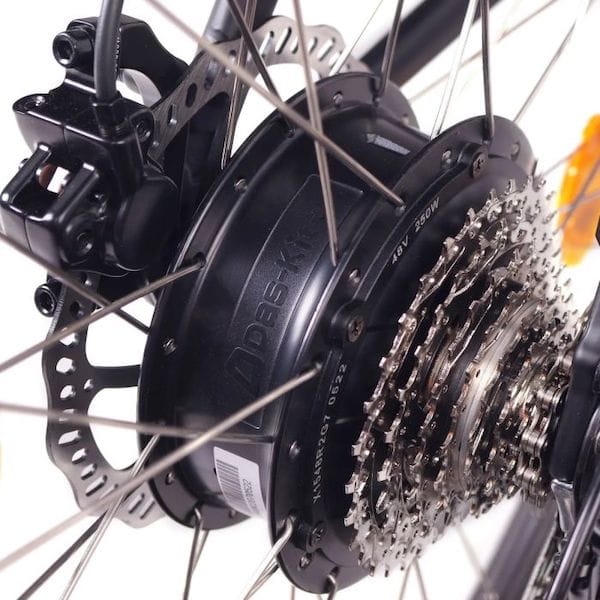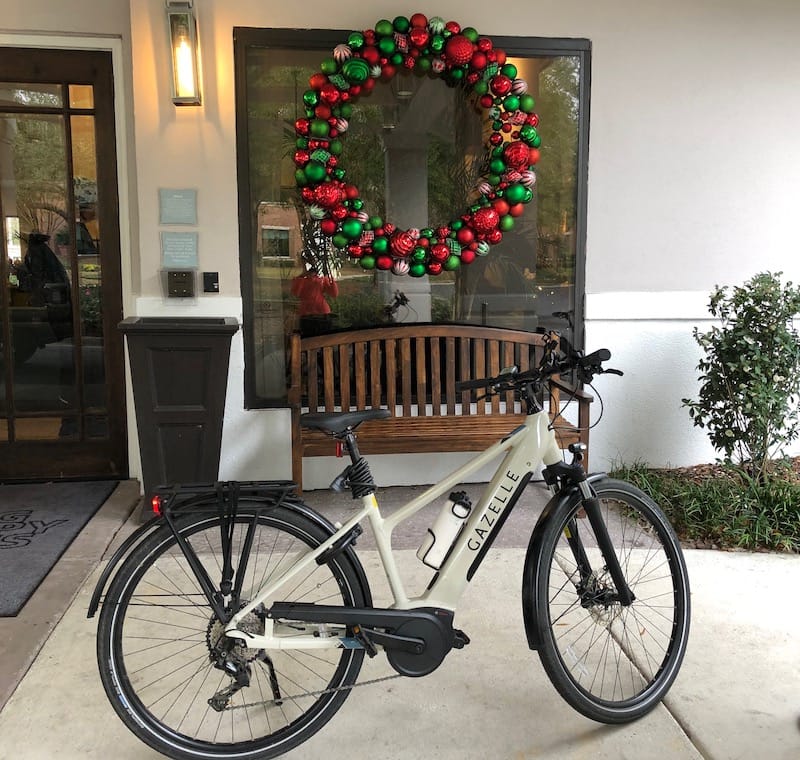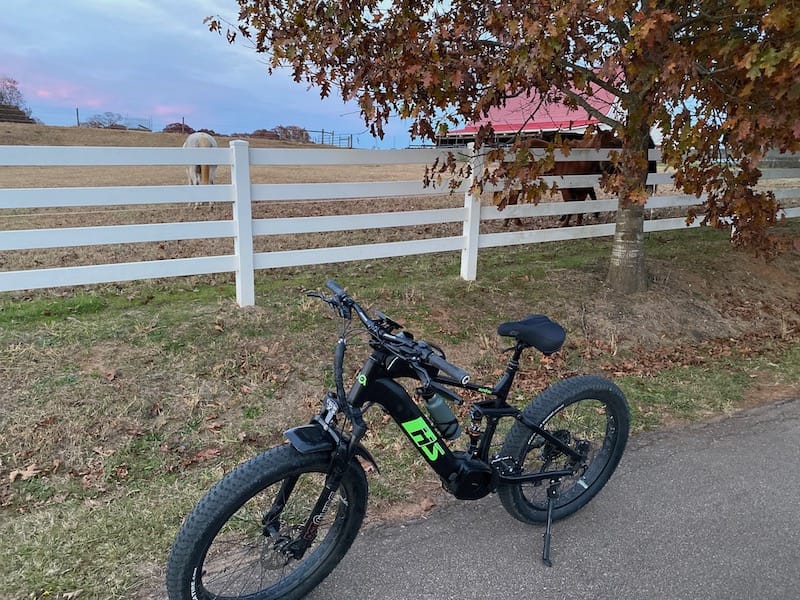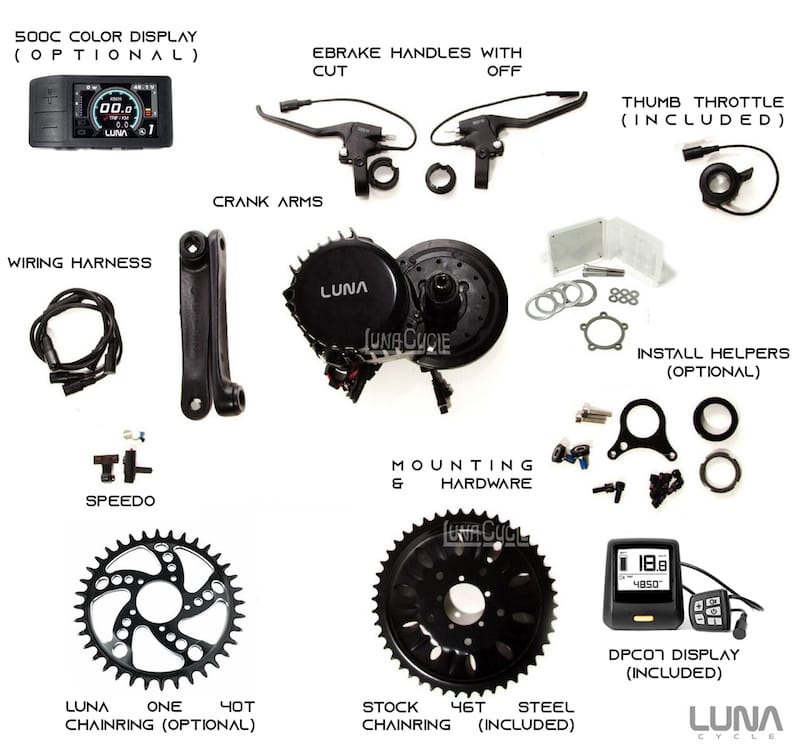We wanted a pair of e-bikes - now what?
Now what, indeed - with ebikes ranged from $1000 USD to $10K and more, how to decide?
Considering motivations
Like I mentioned in my ‘intro to ebikes’ article, there are a ton of different ebike styles, from cargo bikes to mountain bikes and everything in between. It’s worth reviewing that article if you’re looking an unsure yourself.
In our cases, my own thinking was seemingly simple, or at least started out ‘simple’ - my wife basically liked the one she rode in Germany, so something in a similar style for her was the simplest path to her being into it.
Mine, I kind of waffled on - being used to dual-sport types of motorcycles as well as doing some fairly epic cross-country types of rides (Iowa to NC, Costa Rica, Dominican Republic) both on and off-road, my initial thoughts went to my motorcycle setups - front and rear suspension, rear rack and a tank bag, basically an ‘all arounder’ that I could load up, or pack light/minimally.
The problem in my thinking for e-bikes is two-fold though - at least most bikes capable of bearing real weight on them both don’t have full suspension and the added weight. For a motorcycle, I could feel a weight difference of 50# between bikes, and probably a bit less as my cross-country trips I pack light but effectively and could feel the difference with ‘trip loadout’ vs no load. I needed to consider - am I looking for an electric motorcycle, or an electric bicycle?
At least initially, that wasn’t so easily answered. What guy doesn’t like speed, after all?
The other shock coming in was the regulations, as well as the prices. Most of the EU-type bikes coming with a Bosch, Shimano, Brose, or Yamaha motor all had their assistance cut out at ~20mph as a ‘carry-over’ from EU regulations. The US regulations were (thankfully!) slacker, but for the most part, the ‘big bike brands’ made only minor changes for US models and generally were identical across markets in the power department. They are also relatively expensive starting at ~$4000 USD and up for the most part.
There were various conversion kits out there, and as I’ve been working on cars and motorcycles since before I was legal to drive/ride them, I thought about this one for a bit - finding a decent ‘normal’ bike frame and just adding the motor, battery and wiring, and it is a compelling story for me, but realistically speaking - I already have too many projects, and one of the purposes of the bikes was to get out and do something together with my wife, where ‘just works’ has some value to it..certainly at least for the first one! .
Hub motors and mid-drives
I did a lot of ‘internet homework’ on all of the bikes, components and brands out there initially. I was also slowly creeping upwards on the cost of ‘a quality bike’ - some offerings from Leon Cycles were initially in contention like the Moscow Plus and T1000, and better - they were both under $2k!
Further reading led me down the path of hub motors vs mid-drives. There is a lot of information out there, but to summarize it - hub drives don’t use the bike’s gearing but can get home if a chain snaps, while mid-drives leverage the bike’s gearing but are stranded if the chain snaps. Further, and very possibly due to the lack of use of the bike’s gearing, hub drives aren’t generally good performers on hills, or at least at sustained inclines. Were we in Florida or somewhere (boringly-)flat, I might have still considered it, and hub motors may suit the needs of some…just wasn’t what I was looking for.
There’s a bit more to it, as all or nearly all hub drives are cadence-sensing and are built into the rear or front wheel itself, while mid-drive motors can be either cadence-sensing or torque-sensing.
Few of the ‘big bike brands’ offer hub-driven bikes, but a plethora of smaller companies do, with a range of brands of motors, the most prevalent of which is Bafang, a Chinese company offering both hub and mid-drive motors, batteries and displays.

Then there’s torque-sensing and cadence-sensing…
The Bosch-powered bikes we rode in Germany were torque-sensing, which means one or more sensors are used to measure how much pedal pressure or force is being applied to the pedal by the rider, then programming internal to the bike’s controller responds more or less as a ‘multiplier’ of that force, dependong on the power level or mode selected (e.g. Eco, Tour, Sport, Turbo, etc.). The net effect of this, when done well, is you feel like you’re riding a normal bike, but ‘more,’ like you’re suddenly stronger. These systems continue to evolve and aren’t perfect, but this is a pretty good representation of how we felt riding the Bosch bikes. There are internally some various ‘steps’ or levels of force being considered, but overall it’s a fairly natural feeling when done properly.
Cadence-sensing on the other hand, has no way to determine how hard or how much pressure you’re putting on the pedals, but instead uses one or more sensors to see how fast the bike is being pedaled, or in the simplest (and not uncommon) case - if the bike’s pedals are moving, and applies power according to the model selected, usually a fixed amount of power.
This all may sound like - who cares? but depending on what specifically you’re looking for, can have a big impact on how the bike feels when riding it.
I quickly discounted the conversion kits for the first round, along with anything with a front hub drive, and then was sad to see my initial front-runner Leon Cycle/NCM bikes out of the running as I decided against hub drives, as we just have too many parks and trails and head to the mountains often enough I just didn’t want to risk hub drives overheating or cooking themselves. This also had the side effect of moving the needle once again from ~$2K to - more.
We were also still sitting in the middle of the pandemic, with supply chains and freight completely screwed up, so a lot of bikes were out of stock online or locally.
I looked quite a bit online, and saw a fair number of companies basically relabeled some of the same bikes with Bafang motors in them - Eunorau, Biktrix, Bolton ebikes and numerous others - which wasn’t nescessarily a bad thing, but is worth noting.
I found a few possible contenders for my wife used, and had a short list of bikes for myself, most of which weren’t in stock, and also was still internally fighting with the pricing - I’ve owned over 100 cars and motorcycles and only once bought new. Meanwhile, the concept of paying for a bike now, then waiting some
Searching Craigslist and Facebook marketplace, I short-listed a couple for my wife, and we hit up a not-so-local 60 mins away bike shop that had a handful of ebikes in stock. They carried R&M ($10K+), Gazelle, 604, and a handful of other bikes. One of the bikes I had short-listed for my wife was a Gazelle, so had her jump on and off the few in the shop, while I just didn’t see anything for me other than a > $10K Reise and Mueller that had zero chance of me paying that much $ for...
Some good news though...
My wife really liked the Gazelle which was a mid-step with decent wider (for this kind of bike at least) tires, and this was the bike of what I’d seen used I felt the most confident on - a Gazelle T10 Medeo, with front short-travel fork, Deore brakes and drivetrain and Bosch Performance Line motor. Unfortunately it was a Class 1 versus the T10+, meaning it would only assist to 20mph vs 28mph, and it was also some $3200 + taxes, so around $3500 assuming no other out-the-door added fees.
We went to take a look at the one I’d found used, and hit ‘pay dirt’ so to speak. The woman had bought the bike, then started a PhD program and quickly realized she effectively had no time to do much of anything, least of all - ride.
The bike appeared brand new, had all documentation, original receipts, and had a total of 22 miles on it. We went for rides on it, and wife was happy, so negotiated a little bit and took it home for $2400 including a new helmet.

One down, one to go..
The reality was that most of the bikes I looked at were out of stock online, with unknown restock or delivery dates. I did look at the Biktrix Ultra Juggernaut series, and really liked their support and tech articles, along with some similar offerings from Bolton and Eunorau - more or less the same frames coming from BTN (and same bikes in some cases..). They were out of stock, of course, so I had kept looking online, then came across a used Eunorau FAT-HS, which has awful color lettering on it IMO, but was a mid-drive Bafang 1kW motor, had front and rear suspension, and came with a spare second battery and had fat tires on it (4” wide).
New, they went for ~$3700 with a second battery, which was getting me into the realm of ‘uncomfortable-ness’, at least until we saw if we’d really use them regularly. Meanwhile I hadn’t seen much else of interest used or in-stock - anywhere. I’d kept checking in on the Luna X1 which had been out of stock for some time, and checking the used/deals section of Biktrix, but went ahead and scheduled a meetup on the Eunorau.
The bike had a couple of upgrades from original - a Cane Creek headset replaced the apparently awful OE version, the second battery, a Cloud 9 seat, DNM air shock, and ‘manual’ drop seat post, meaning no remote but a lever under the seat on the seat post.
The bike rode ok on throttle and pedaling in the parking lot, while my wife hated it on her quick attempt to ride it (but it also was pretty large for her..), and I brought it home for $2400.

Unlike my wife’s bike, which did well on it’s first, and subsequent shakedown/initial rides, I needed to get some parts… to be continued..
